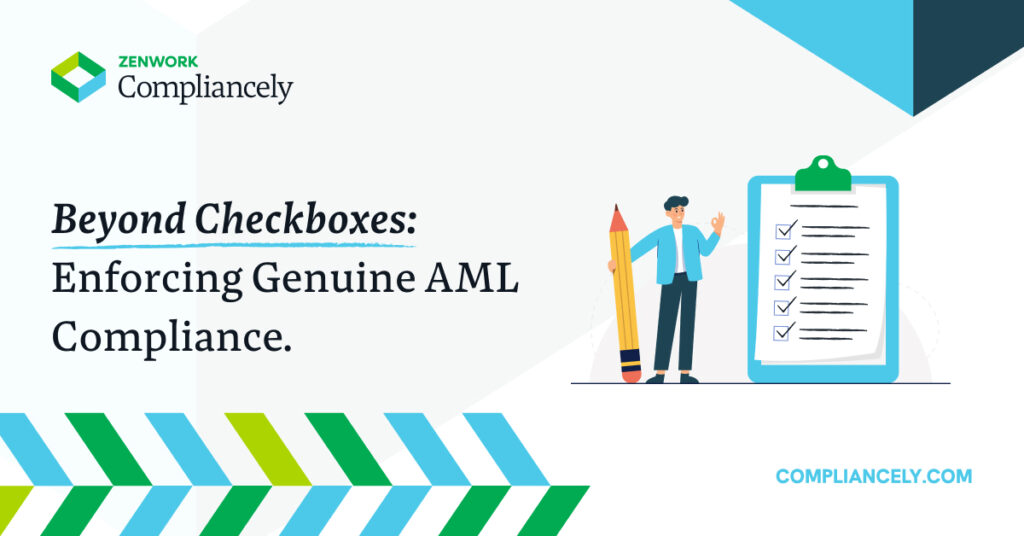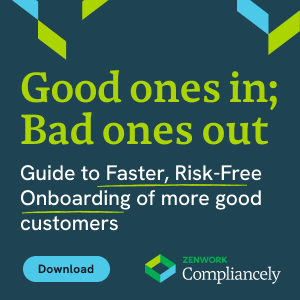
Beyond Checkboxes Enforcing Genuine AML Compliance
Remember the movie “The Big Short”? It gave us a glimpse into the chaos of the 2008 subprime financial crisis, where the absurdity of unchecked greed was laid bare. In one memorable scene, Mark Baum (played by Steve Carell) confronts mortgage brokers (played by Max Greenfield and Billy Magnussen) who nonchalantly admit to their part in—falsifying mortgage form information without a second thought to cash in high commissions. It’s a pivotal moment that encapsulates the reckless actions like those that led to the housing crisis, a domino effect of deceit that brought the world’s economy to its knees.
That’s one of the reasons why the financial industry has undergone a lot of changes over the past decades, but it still needs to be what people expect it to be. Despite numerous fraud and manipulation cases, there is a growing consensus that a few financial institutions are flouting the rules to prevent fraud. The cavalier attitude of mortgage brokers in the film, who manipulated loan information, reflects a real-world issue that still persists. Because it’s not just about ticking off checkboxes; it’s about ensuring every step taken is a move toward greater financial security and integrity. The financial industry continues to combat the need for stringent Anti-Money Laundering (AML) compliance to prevent such manipulation and illicit activities.
However, screening for AML (Anti Money Laundering), OFAC (Office of Foreign Assets Control) Sanctions, and PEP (Politically Exposed Persons) can take much work for institutions to perform manually, which can add to the already loaded pre-onboarding paperwork. With a keen eye on these challenges, we lay a roadmap to genuine compliance for the financial institutions. Keep reading to learn how.
Why should financial institutions take AML Compliance so seriously?
1. Regulatory Imperatives in the Current Landscape.
With government bodies worldwide strengthening their regulatory requirements, AML compliance has become a top priority for financial institutions to strive. National and international laws, such as the US Bank Secrecy Act, Switzerland’s Anti-Money Laundering Act (AMLA), Singapore’s Payment Service Act (PSA) and many more, mandate rigorous adherence to AML/CFT protocols.
Financial institutions’ failure to comply exposes them to significant legal, operational, and reputational risks. The UK’s Financial Conduct Authority (FCA) has identified common failings in AML frameworks, emphasizing deficiencies in oversight, customer due diligence processes, and transaction monitoring systems.
In the US, the foundation of modern AML regulations can be traced back to the Currency and Foreign Transactions Reporting Act of 1970, which later evolved into the Bank Secrecy Act. Subsequent amendments, including the latest one in 2020, reflect ongoing efforts to align regulations with evolving financial landscapes.
Finance industry face severe consequences for non-compliance, including substantial penalties totaling $10.5 billion in 2023 alone. Beyond financial penalties, non-compliance erodes trust, tarnishes reputations, and undermines the financial system’s integrity. The BSA as well as FCA’s scrutiny emphasizes the imperative of robust AML frameworks to mitigate regulatory risks effectively in this global scenario.
2. Bad money promotes bad actors
AML compliance also serves as a critical defense against fraudulent activities within the financial system. Effective AML programs are essential for detecting and deterring money laundering and other illicit economic activities. However, fraudsters continuously adapt their tactics, necessitating agile AML frameworks capable of identifying sophisticated fraud attempts.
Establishing the Global Financial Action Task Force (FATF) in 1989, driven by the US and the UK, exemplifies international efforts to combat money laundering and terrorist financing. Collaborative initiatives, such as the European Union’s 6AMLD, underscore the global commitment to harmonizing AML directives and strengthening financial integrity.
3. Importance of Vigilance
Financial institutions must remain vigilant in their AML efforts to safeguard against evolving fraud threats. Failure to uphold robust AML compliance measures exposes institutions to significant financial and reputational risks. By prioritizing AML compliance, financial institutions can mitigate fraud risks, uphold regulatory standards, and maintain the trust and confidence of stakeholders.
Read more about it:- Ongoing Compliance Requirements For Businesses.
How Tech and Automation Are Revolutionizing AML Compliance.
Just picture this: a customer walks into a bank. But instead of waiting in line to show his ID, technology steps in. It’s fast, accurate, and changes the game for AML compliance. Banks are starting to use innovative technology like AI, biometrics, and advanced scanning to ensure you are who you say you are with zero effort and error. Here is how tech is helping financial institutions improve safety and customer experience.
It’s not just about speed; it’s about being smart. Banks can proactively identify discrepancies by analyzing behavioral data, like email patterns and mobile usage. This proactive approach is critical in averting illicit activities before they even begin.
Once a customer’s identity is verified, the technology safeguards the institution by ensuring the individual’s name does not appear on any watch lists. It remains vigilant, constantly scrutinizing transactions to flag any anomalies preemptively.
But here’s the real deal: automation. It’s like having a super-efficient assistant who never sleeps. This digital helper streamlines all the paperwork, keeps track of everything, and automates all the intricate repetitive tasks. From creating risk profiles in seconds to giving knowledge on global due diligence, it’s about making life easier for the financial institutions’ AML compliance needs.
Financial institutions can significantly benefit from using technological innovations to improve areas such as effectively extracting, interpreting, and verifying extensive data. By doing so, they can focus on strategic initiatives, enhancing performance, and adhering to best practices.
Way Forward
The finance sector is at a critical crossroads where the traditional approach to compliance is no longer sufficient to combat modern financial crimes. Beyond mere checkboxes, genuine AML compliance demands a proactive, technology-driven approach. In this precarious moment, integrating technology into AML strategies is not just an option it’s a necessity. By leveraging innovative tools, banks can enhance their compliance frameworks, ensuring they are both effective and efficient.
In this context, solutions that offer comprehensive AML checks and due diligence such as those provided by Compliancely become invaluable. These solutions enable banks to achieve a level of compliance beyond mere regulatory fulfillment, safeguarding the integrity of the financial ecosystem.
As we look to the future, it’s evident that the banking sector must embrace this wave of technological innovation to meet the evolving demands of AML compliance. It’s a proactive step towards securing a resilient and trustworthy financial landscape.
